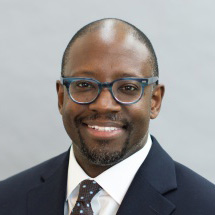If anyone tells you that people have been moving to the suburbs in the past ten years or so to pursue a life of comfort, ease, and safety you can know for a fact that they are stuck in a 1980s vision of American life.
What has been trending in America in the past 10 years or so is that people are moving to major cities for a life of comfort, ease, convenience, excitement, and the pursuit of the “New Urbanism American Dream” that displaces minorities and the poor to the suburbs as urban market conditions change to meet demand. In fact, according to a Brookings Institute report, by 2008 large suburbs became home to 1.5 million more poor than their primary cities and housed almost one-third of the nation’s poor overall. According to the report, “between 2000 and 2008, suburbs in the country’s metro areas in cities of all sizes saw their poor population grow by 25 percent—almost five times faster than primary cities and well ahead of the growth seen in smaller metro areas and non-metropolitan communities.”
This change is making the suburbs home to a more diverse population in terms of age, ethnicity, household size, and poverty status. Today there is very little difference between racial and cultural diversity in major cities versus the suburbs. We are living in a new era where blacks and Latinos make up a disproportionate share of the poor in both cities and suburbs. To preach against living in the suburbs in 2013 is to preach against opportunities to be in solidarity with those who are suffering.
The suburbanization of racial diversity and poverty cuts across the country. In San Francisco, for example, a UC-Berkeley report explains, “the number of people living in poverty in the Bay Area rose 16 percent in the suburbs, compared with 7 percent in urban areas, this analysis finds. And the greatest percentage of growth in suburban poverty was among blacks and Latinos. The percentage of the poor living in the suburbs has increased across all racial groups, but the change is highest among blacks, increasing by more than 7 percentage points from 2000 to 2009.”
In Atlanta, according to the Saporta Report, “the poor population in the city held stead between 2000 and 2010 while the poor population in the suburbs grew by 122 percent—more than doubling over the course of the decade.” Other cities with extremely high rates of new suburban poverty include, New York City, Philadelphia, Washington, D.C., Chicago, Seattle, Dallas, Houston, Minneapolis, St. Louis, Detroit, Baltimore, Cleveland, New Orleans, and others.
The social pathologies that used to be associated with inner cities are now becoming more of the dominant paradigm in America’s suburbs. The Wall Street Journal reports that while crime rates are decreasing in big cities they are increasing in America’s suburbs. For example:
The decline in homicides nationally has overshadowed a countertrend: rising murders in the suburbs, the communities that ring cities and have long been promoted as havens from violent crime. U.S. homicides fell sharply from 2001 to 2010, including a 16.7% drop in big cities, according to a federal Bureau of Justice Statistics study of the most recently reported data. That is because of a host of factors, including better medical treatment for victims of violent injury and aggressive police measures in mega-cities like New York and Los Angeles.
Naturally, this has had an effect on suburban crime rates overall. “The sharpest increases in violent crime appear to be in suburbs of cities, including those of Houston, Pittsburgh, and Atlanta. The violent-crime rate in Atlanta’s suburbs rose 23% between 2000 and 2008, while the city of Atlanta’s violent-crime rate dropped 49%, according to federal crime data in a May 2011,” according to the report.
The most recent shifts have much to do with the financial collapse of the last decade and the rise in the gentrification of cities of all sizes across America. These new trends mean that progressives are preparing to move social services from the city of suburbs in a call to suburbanize welfare programs. Is this, however, America’s best option?
This current shift also provides wonderful new opportunities for suburban churches and other cultural institutions to remain in the suburbs and adjust their vision and activities to receive this new cohort of suburban poor. Words like “urban” and “inner-city” can no longer be associated with racial minorities and the underclass. In the coming years, as is the case today in cities like New York, “urban” and “inner-city” will be the home of cultural elites who are rearranging the market and pricing out the poor. In the near future, the inner city will be the place to find trendy coffee shops, Whole Foods, and artist enclaves. The suburbs may not be where all the “cool” innovators and culture makers will live to raise their children but it is the place where poverty is exploding.
In the end, the question in the coming years is this: Who will answer the call to be in solidarity with the suburban poor?

